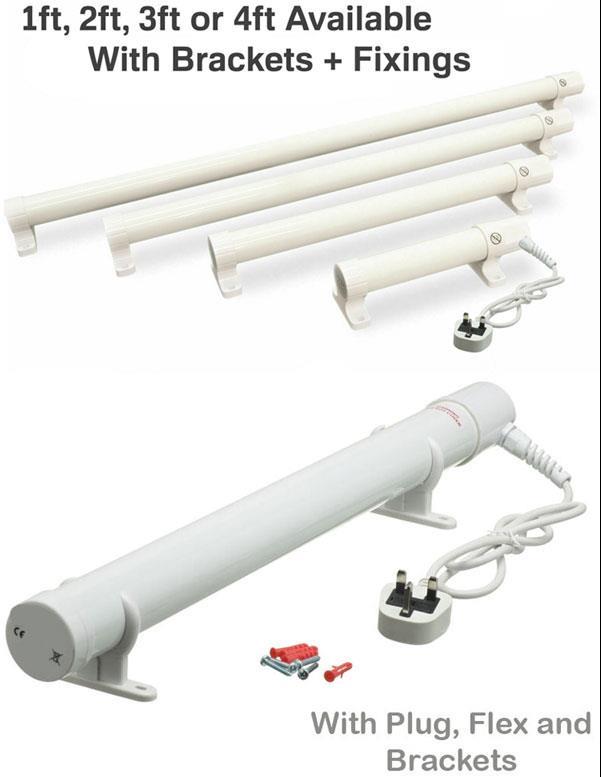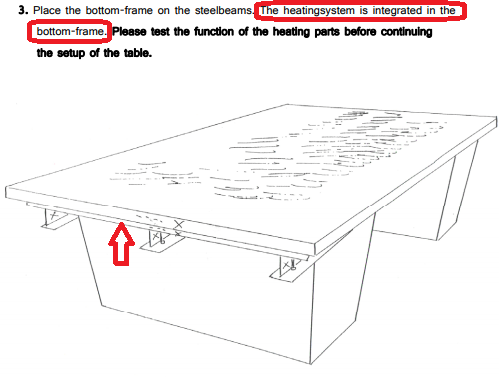Heated Billiard Table
Heated Billiard Table
This article about heated billiard tables is for informational purposes only. Do not attempt to heat your own table. Consult professionals. Billiards Forum takes no responsibility for any harm caused from attempts to heat your own billiard or pool table.
Heated Billiard Table
Many readers have asked where they can get a heated billiard table. Just as many have asked how they can convert their existing table to a heated one. We gathered a bunch of information on heated pool and billiard tables and compiled this article from the best of it.
To begin, please read this warning. Creating your own heating system for a billiard table is not a good idea, as there are many concerns with starting a fire. It has been suggested that one can install roof de-icing wires, radiant heat, or other methods, but because of their propensity to create fire, they should be considered with extreme care. Also, these methods, when not professionally installed, do not usually heat the slate in a uniform manner creating an inconsistent roll through the playing surface.
The benefits of heating a billiard table are undeniable. Keeping the slate just a few degrees warmer than room temperature can greatly affect playing conditions. The heat helps keep moisture out of the cloth, which makes it much faster. It also keeps the slate dry and warm, and the cushions from getting too hard and cold. Many major billiard tournaments have heated tables to reduce moisture that is created from humidity. Large audiences can generate high humidity levels from their breath alone. Even players add to the humidity levels. Sweaty hands on the table adds moisture to the cloth, which severely affects speed. In fact, many who have played on heated tables have reported that "laying your hand on that warm cloth is so nice."
The earliest well known story of anyone heating their billiard table actually comes from England, where Queen Victoria (1819-1901) played billiards on a table that was heated. This particular pool table was heated using zinc tubes, with the goal of preventing the pure ivory billiard balls from losing their shape due to warping. The first known use of electricity to heat a billiard table was in 1927. It was used in a table played in a tournament match between Jacob Schaefer, Jr. and Welker Cochran in 18.2 balkline. This use of electric heat was praised in an article by the New York Times. It read "For the first time in the history of world's championship balkline billiards a heated table will be used..."
Billiard table heating systems are available at a price, and generally start at about $6500 USD. Most commercial heated billiard tables are very well constructed, well insulated, and have a top wattage peaking out at 500 watts. These tables are available from manufacturers like Verhoeven, and are priced at around $10,000 USD on average. Some common designs available commercially include the use of plywood and special resistance heating wire. The wires are mounted on insulators under the plywood, which is attached several inches below the slate. The temperature is controlled by a thermostat.
Commercially heated billiard tables work by heating the slate to about 5 degrees Celsius above room temperature. As mentioned earlier, this helps make the table faster, and the ball roll and rebound in a consent manner throughout the table. This type of heated billiard table is actually required in certain billiard tournaments, like three-cushion and artistic billiards competitions.
If you can not afford a commercially available heated billiard table you are not alone. One billiard enthusiast who used to play carambole games in the Philippines claims that they used to burn charcoal under the tables to increase slate temperature. Other common home-built billiard table heating systems make use of either radiant heat from either heated water flowing through piping or from radiant wires. There have been a few examples of people attaching radiant wire to the bottoms of their slate, and running it off of standard 115 VAC, at 60hz. Again, there is a real hazard here if you are not experienced. Always consult a professional.
That about sums up heated billiard tables. If there is one thing you take out of this article, it should be that you must consult professionals to install a heating system in your pool table. Actually, I'll end with a story. A professional trick shooter, Fast Larry, who appeared on a season premiere of Ripley's Believe It Or Not, says that the show's crew almost burned down the set because they didn't follow his exact instructions for properly heating the two billiard tables he was to play on. The set builders bought the wrong supplies, and one of the tables caught fire. Let this be a lesson.
Heated Billiard Table
- Title: Heated Billiard Table
- Author: billiardsforum (Billiards Forum)
- Published: 7/26/2007 3:43:39 PM
- Source: Internet
Heated Billiard Table
The Heated Billiard Table article belongs to the Home Billiard Room Tables category. Articles on pool, snooker, and billiard tables as related to home billiard rooms.
Heated Billiard Table Comments
Mark Snooker from Wolseley, SK on 1/12/2018 2:11:05 PM
I designed and installed my own heat system for my pool table. It works safely and marvelously. I could not be happier with it.
 billiardsforum from Halifax, NS on 1/13/2018 10:27:08 AM
billiardsforum from Halifax, NS on 1/13/2018 10:27:08 AMInteresting. Would you care to share the plans or details?
Jonnie from Miami, FL on 8/20/2020 11:26:48 AM
What do you think of this?
Electric Tube Heater for Pool Table or Snooker Table Slate Bed
Price: GBP 17.45
If you want your table to run quicker and the cloth to last longer, then read on…
For the past twenty years, under table heating has been used as a method of getting the optimum performance from a snooker table. These simple tubular electric heaters are ideal for mounting to heat the tables slate bed, to keep the bed at a constant temperature. This "improves ball speed" and is approved by the professionals.
Available in a range of sizes from 1 Foot to 4 Foot to allow for positioning. Comes with mounting brackets and fixings and a 1.5 meter flex with 13 amp plug.
Sizes Available:
- 1 Foot = 40 Watts (305mm x 55mm Diameter)
- 2 Foot = 80 Watts (609mm x 55mm Diameter)
- 3 Foot = 135 Watts (916mm x 55mm Diameter)
- 4 Foot = 180 Watts (1222mm x 55mm Diameter)
Source: ebay.com/itm/162094913028
 billiardsforum from Halifax, NS on 9/18/2020 7:19:36 AM
billiardsforum from Halifax, NS on 9/18/2020 7:19:36 AMIt will not accomplish the primary requirement of professional heated billiard tables:
Uniform and consistent temperatures throughout the entire playing surface.
Let's say you mount a few of these under the pool table (somehow). The slate will heat up the most in those areas, and the periphery will be of a lower temperature. This will cause different parts of the play field to perform differently.
These are a generic item marketed for many uses. They aren't purpose-built for this application, and thus, will not likely perform anywhere close to what is needed.
With all that said, it's just my opinion based on seeing the photos and description. I've not tried them nor have I heard from anyone who has.
 RayMills from Seattle, WA on 9/18/2020 7:43:27 AM
RayMills from Seattle, WA on 9/18/2020 7:43:27 AMIt looks like the only way they'd work is if you pre-heated the table for hours to get a dispersed "crust in the oven"!
Given the nature of slate, I wonder if a long pre-heating is necessary even for a system where there are heating elements under the entire surface? It seems like gobs of electricity, and then I'd worry about warping.
Too bad we never heard back from the @Mark Snooker above.
Jonnie from Miami, FL on 9/18/2020 10:43:48 AM
@billiardsforum,
I agree. That is why I just purchased a new carom table with a built-in heating system.
 RayMills from Seattle, WA on 10/2/2020 4:38:06 AM
RayMills from Seattle, WA on 10/2/2020 4:38:06 AMSo is the source of heat embedded in the slate?
 billiardsforum from Halifax, NS on 10/2/2020 5:18:34 AM
billiardsforum from Halifax, NS on 10/2/2020 5:18:34 AMHeating elements would never be embedded within the slate as far as I know.
There are lots of different types of heating elements used by various manufacturers over time, but they are most commonly placed directly under the slate.
Heated Soren Sogaard carom tables have their heating elements embedded in the wood frame that supports the slate (wood that spans the entire frame, on top of which the slate sits).
From their assembly manuals:
Soren Sogaard also sells a "heating foil" that can go under a slate (between the backing board and the slate) for pool tables or carom tables that didn't come with a heating system.
Reply and share your comments below:



